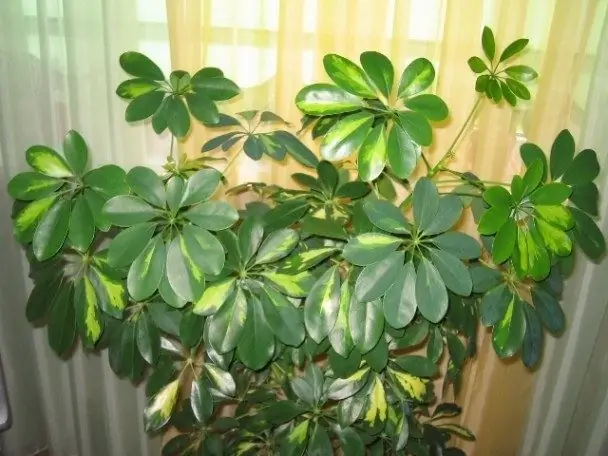Sheffler leaves are a unique and truly beautiful sight. They simultaneously resemble a dill umbrella, a tropical butterfly, and an outlandish peacock's tail. Growing this plant at home is not that difficult; care instructions must be followed. If you are planning to transplant your green beauty, you also need to do it correctly.

Necessary
- - "universal" soil,
- - pots,
- - water,
- - drainage.
Instructions
Step 1
First, find out if your boss needs a transplant. Young plants are replanted annually by cheflers, as they grow actively and very quickly fill the small pot with their roots. Older plants, already relatively mature, need to be transplanted once every two to three years. If you still have any doubts, you can proceed as follows: remove the chef from the pot and inspect her root system. If you see that the roots are entwining the bottom and there is very little earth left, it's time to replant. If there are few roots and the earthen lump is still free, you can still wait.
Step 2
Start land and transplant. It is very important that the root system is able to grow in a new pot, so plant the plant on a wide layer of soil, not on a drainage lightly dusted with soil. After transplanting, the plant must be pressed tightly so that voids do not form in the pot, and the roots can adhere more tightly to the ground and water abundantly.
Step 3
Very large chefs are transplanted without replacing the soil coma. Just remove the plant from the pot and transfer it to another, slightly larger one. Do not forget that there must be drainage in the pot anyway. Sometimes, if for some reason replacing the soil coma is impossible, it is advisable to replace the topsoil. Carefully so as not to damage the roots, remove the top layer of soil in the pot about 10 cm and sprinkle on top of new fertile soil. Often, the top layer of soil in the pot is caked, making it difficult for moisture and air to circulate to the roots. Replacing this layer with a looser and more fertile one has a significant healing effect on the chefler.



